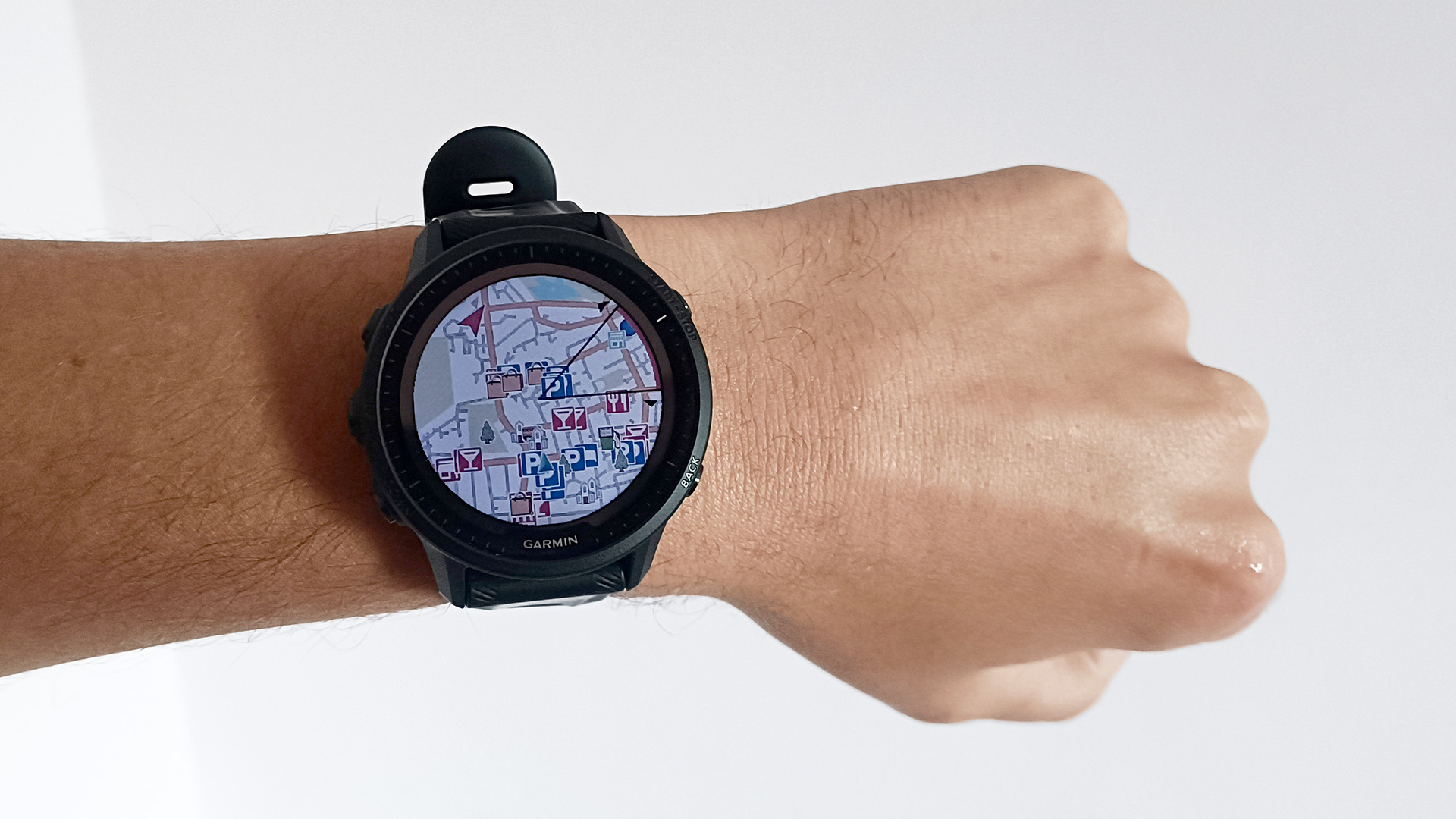Halfway through a run, I turned off my Garmin and used Google Maps instead
I wish audio navigation cues were easier to come by

Halfway through an 18-mile marathon training run, a disaster occurred: I ran off-course. I'd been following the map on my watch, the Garmin Forerunner 955 Solar, but the GPX map files Garmin uses to create its courses don’t always work well in built-up areas. I was unfamiliar with the part of London I was in and had to double-back on myself several times, breaking the flow of my run as I waited for the multi-band GPS to lead me back on track.
Those GPX files are awesome for trail running and following a straightforward city course but less good for winding your way through a dense maze of unfamiliar streets. Even though the GPS is highly accurate, the rigamarole of checking even the best running watch at every turn quickly becomes old.
As I got to the last third of my run, I turned on Google Maps on my phone for the audio cues in my ear, and suddenly, all was right with the world. When Google was guiding me home through audio directions, I wasn’t looking at my watch every 30 seconds to check if I should be turning right or worried I would miss a haptic vibration cue. I could turn off the navigational side of my brain and focus on putting one foot in front of the other.
After showering, eating and rehydrating (essential, as I found out when I made that rookie running mistake during another key training run), I decided to check out whether Garmin Connect could feed me navigational audio cues, to save me checking my watch regularly on long runs. Although I usually get audio prompts every kilometer regarding my time, speed and other key metrics, audio-only navigation isn’t something the best Garmin watches can do.
On every navigational tutorial I saw on watches like the Forerunner and Garmin Fenix 6, one of the top comments would inevitably be, “how do I get navigation in my running headphones?” and the answer from the community would always be “you can’t”.

What’s more, even other watches, such as the Apple Watch and Pixel Watch, which come equipped with Apple Maps and Google Maps respectively, won’t feed navigational cues into your earbuds while you’re following a course, even from your phone. It’s all on the watch face.
I find this surprising, as Garmin, Apple and Google all use GPS with audio cues on other devices, from satnavs for cars to maps on your phone. I could generate a route on my Android phone using Google Maps and follow it without even looking at a screen, but I can’t do that with some of the most sophisticated running tech out there. Polar won’t do it. Coros won’t do it.
The closest thing I could find was RunGo, a third-party app that does use audio cues to aid navigation. You can get this on a watch that supports third-party software, such as the Pixel Watch or the Apple Watch Ultra, but otherwise, you’re out of luck.
It’s a niche problem to have and certainly not a dealbreaker. Many of these watches offer world-class on-wrist navigation, and on race days the course is usually clearly laid out for you. But running in an unfamiliar environment at race-pace while constantly checking my watch was enough of a problem for me to believe I’m not the only one out there who has experienced this issue.
Sometimes, I love heading off the beaten track and running without a smartphone. But, occasionally, I just need to be told where to go and what to do, and it’s nice to take the mental load off and focus on running faster.
Get daily insight, inspiration and deals in your inbox
Sign up for breaking news, reviews, opinion, top tech deals, and more.

Matt is TechRadar's expert on all things fitness, wellness and wearable tech.
A former staffer at Men's Health, he holds a Master's Degree in journalism from Cardiff and has written for brands like Runner's World, Women's Health, Men's Fitness, LiveScience and Fit&Well on everything fitness tech, exercise, nutrition and mental wellbeing.
Matt's a keen runner, ex-kickboxer, not averse to the odd yoga flow, and insists everyone should stretch every morning. When he’s not training or writing about health and fitness, he can be found reading doorstop-thick fantasy books with lots of fictional maps in them.